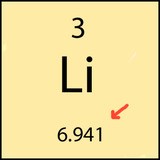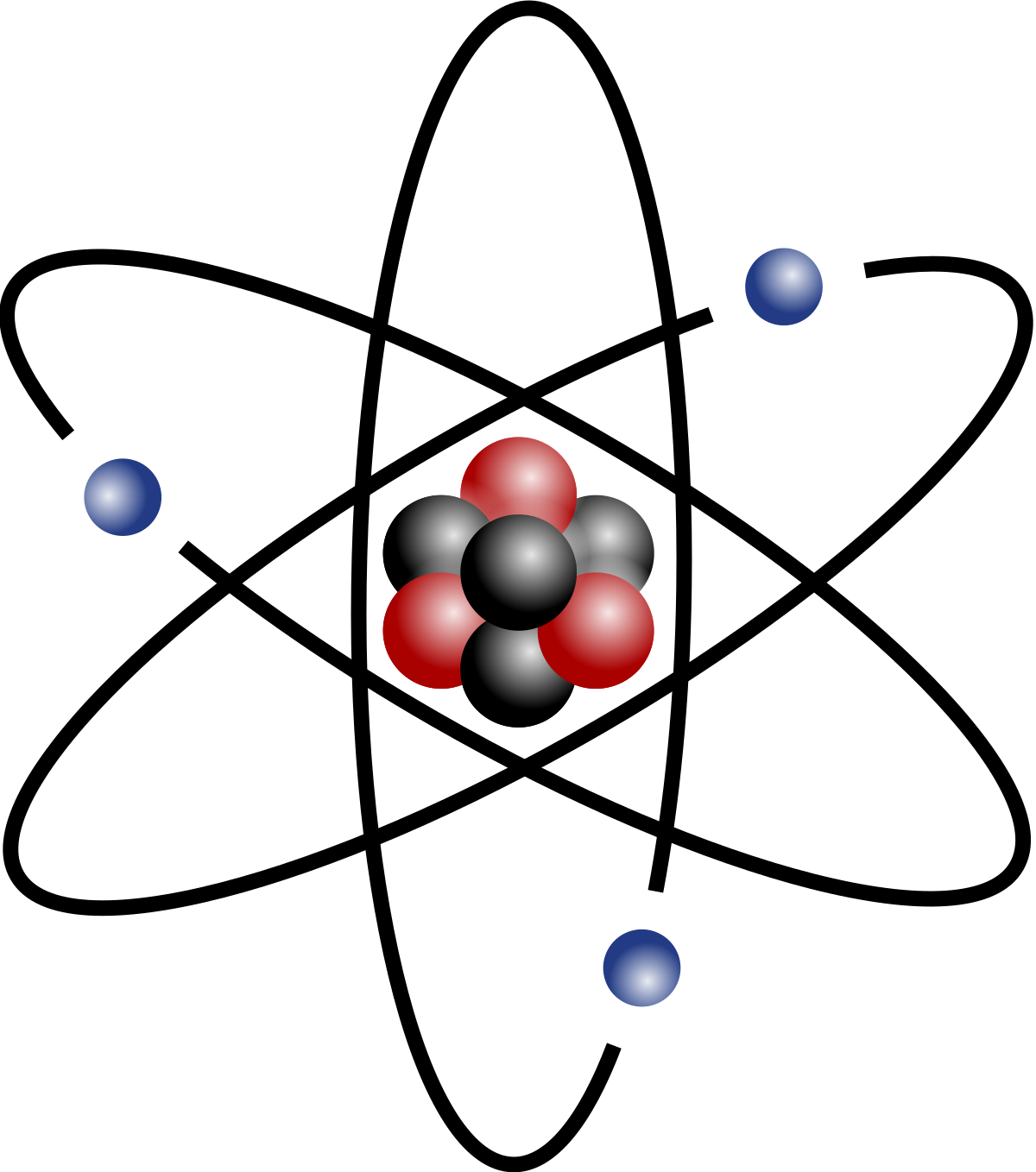| Isotope | Atomic mass (Da) | Isotopic abundance (amount fraction) |
|---|---|---|
| 16O | 15.994 914 619(1) | [0.997 38, 0.997 76] |
| 17O | 16.999 131 757(5) | [0.000 367, 0.000 400] |
| 18O | 17.999 159 613(5) | [0.001 87, 0.002 22] |
Two major sources of oxygen are air and water. Relative isotope-ratio measurements of oxygen in water and many other substances commonly are expressedrelative to VSMOW reference material, in which case the δ18O value of VSMOW is 0 ‰ by definition. However,two other scales have been used commonly: (1) in studies of atmospheric gases and related topics, atmosphericO2 may be assigned a δ18O value of 0 ‰, (2) in studies of marine carbonate deposits andrelated topics, a specimen of marine carbonate (PDB, Peedee belemnite) may be assigned a δ18O value of 0 ‰.

Relating atomic weights to relative isotope-ratio measurements of oxygen may be complicated in principleby the observation that the exponent in the mass-dependent fractionation equation may deviate significantlyfrom one half, and by the fact that relative isotope-ratio measurements generally do not include17O. Nevertheless, though the value of the 17O exponent may be as high as 0.52 or 0.53 in commonsubstances, the atomic-weight errors caused by these differences are small compared to the uncertaintyof the 'absolute' measurement of atomic weight. Larger deviations from mass-dependent fractionationof 18O, 17O, and 16O have been observed in minor atmospheric gases such as O3, CO2, N2O,and CO, apparently as a result of non-mass-dependent photochemical reactions. Similar featureshave been observed in sulfate and nitrate in atmospheric deposition and some types of soils,and it is likely that the number and variety of samples reported to exhibit non-mass-dependent oxygen isotopefractionation will increase rapidly in the future.
The chemists used a 'atomic mass unit' (amu) scale such that the natural mixture of oxygen isotopes had an atomic mass 16, while the physicists assigned the same number 16 to only the atomic mass of the most common oxygen isotope (O-16, containing eight protons and eight neutrons). However, because oxygen-17 and oxygen-18 are also present in. Most notably, he determined the relative atomic weight of oxygen to be 15.879 by three distinct methods, which allowed him to cross-check his results. Many late 19 th century chemists sought to determine the atomic weight of oxygen. Like most of them, Morley focused on the reaction through which water is synthesized from hydrogen and oxygen.
Variations in the atomic weight of oxygen in surface water on the earth commonly are correlated withthose of hydrogen, as the isotopes of both elements are fractionated by evaporation and condensation.Whereas ocean water has almost constant values of H and O atomic weight worldwide (near that ofVSMOW), precipitation varies widely with the lowest values being at high latitudes. Natural variationsin the isotopic composition of oxygen have been exploited since the 1950s in studies of the hydrologicalcycle, biogeochemistry, and paleoclimates.
The highest natural terrestrial δ18O value is reported from marine N2O with δ18O = +109 ‰, x(18O) = 0.002 218, and Ar(O) = 15.999 76. The lowest natural δ18O value is reported from Antarctic precipitation with δ18O = −63 ‰, x(18O) = 0.001 875, and Ar(O) = 15.999 04. Given the relatively small uncertaintiesin the best 'absolute' measurements (0.25 ‰) and in typical relative measurements (0.1 ‰ or less), it is evident that the uncertainty of the standard atomic weight of oxygenis dominated by real natural variations.
Atomic weights of the elements 2009 by M.E. Wieser and T.B. Coplen. Pure Appl. Chem. 2011 (83) 359-396
CIAAW
Atomic Mass Of Ob
Oxygen
Ar(O) = [15.999 03, 15.999 77] since 2009
The name derives from the Greek oxys for 'acid' and genes for 'forming' because the French chemistAntoine-Laurent Lavoisier once thought that oxygen was integral to all acids.
Oxygen was discovered independently by the Swedish pharmacist and chemist Carl-Wilhelm Scheele in 1771, and the English clergyman andchemist Joseph Priestley in 1774. Scheele's Chemical Treatise on Air and Fire was delayed in publicationuntil 1777, so Priestley is credited with the discovery because he published first.

Natural variations of oxygen isotopic composition
Isotopic reference materials of oxygen.
Atomic and Molecular Weights
The subscripts in chemical formulas, and the coefficients in chemical equations represent exact quantities. (ce{H_2O}), for example, indicates that a water molecule comprises exactly two atoms of hydrogen and one atom of oxygen. The following equation:
[ ce{C3H8(g) + 5O2(g) rightarrow 3CO2(g) + 4H2O(l)} label{Eq1}]
not only tells us that propane reacts with oxygen to produce carbon dioxide and water, but that 1 molecule of propane reacts with 5 molecules of oxygen to produce 3 molecules of carbon dioxide and 4 molecules of water. Since counting individual atoms or molecules is a little difficult, quantitative aspects of chemistry rely on knowing the masses of the compounds involved.
Atoms of different elements have different masses. Early work on the separation of water into its constituent elements (hydrogen and oxygen) indicated that 100 grams of water contained 11.1 grams of hydrogen and 88.9 grams of oxygen:
[text{100 grams Water} rightarrow text{11.1 grams Hydrogen} + text{88.9 grams Oxygen} label{Eq2}]
Later, scientists discovered that water was composed of two atoms of hydrogen for each atom of oxygen. Therefore, in the above analysis, in the 11.1 grams of hydrogen there were twice as many atoms as in the 88.9 grams of oxygen. Therefore, an oxygen atom must weigh about 16 times as much as a hydrogen atom:



Oxygen Atom
[ dfrac{dfrac{88.9;g;Oxygen}{1; atom}}{dfrac{111;g;Hydrogen}{2;atoms}} = 16 label{Eq3}]
Atomic Mass Of Oxygen
Hydrogen, the lightest element, was assigned a relative mass of '1', and the other elements were assigned 'atomic masses' relative to this value for hydrogen. Thus, oxygen was assigned an atomic mass of 16. We now know that a hydrogen atom has a mass of 1.6735 x 10-24 grams, and that the oxygen atom has a mass of 2.6561 X 10-23 grams. As we saw earlier, it is convenient to use a reference unit when dealing with such small numbers: the atomic mass unit. The atomic mass unit (amu) was not standardized against hydrogen, but rather, against the 12C isotope of carbon (amu = 12).
Thus, the mass of the hydrogen atom (1H) is 1.0080 amu, and the mass of an oxygen atom (16O) is 15.995 amu. Once the masses of atoms were determined, the amu could be assigned an actual value:
Oxygen Periodic Table
1 amu = 1.66054 x 10-24grams conversely: 1 gram = 6.02214 x 1023amu
